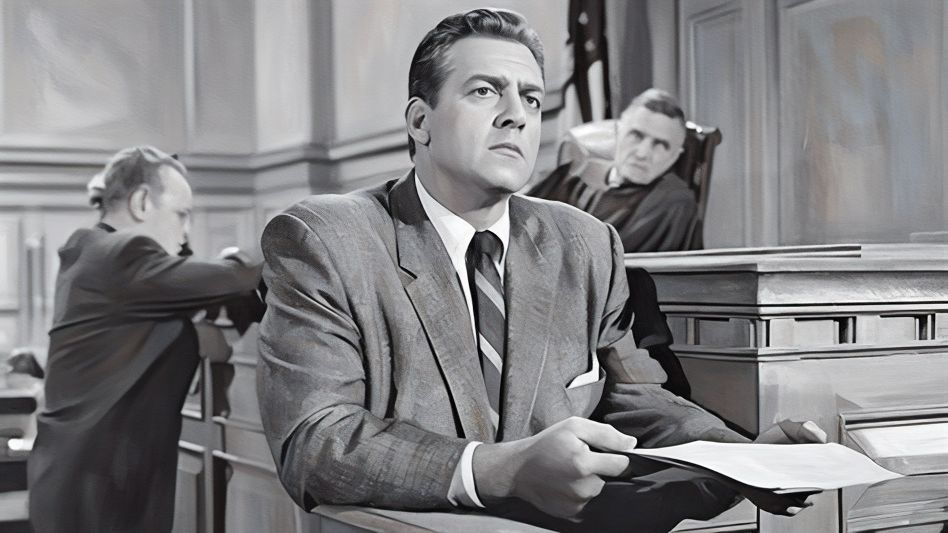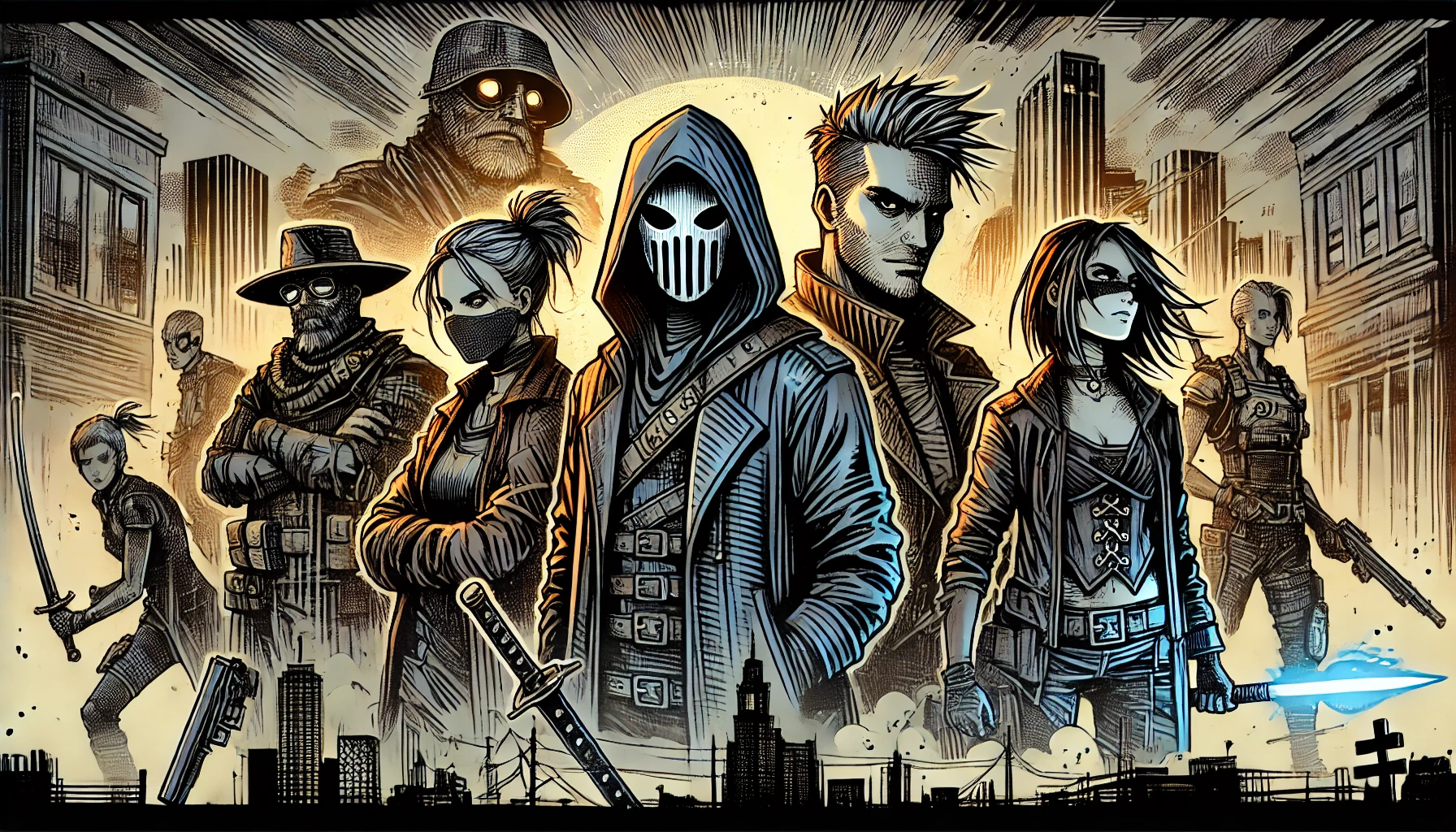No one made the courtroom feel like a stage quite like Perry Mason. In the golden age of television drama, Perry Mason stood out not just for its gripping plots and shadowy mysteries but for one man’s relentless pursuit of justice. Played by Raymond Burr, Perry Mason was more than just a defense attorney—he was a one-man truth machine, using sharp logic, surprise witnesses, and unshakeable calm to dismantle even the tightest cases.
His courtroom showdowns weren’t just legal proceedings—they were events. Fans tuned in every week not to see if he would win, but how. Would there be a surprise confession? A jaw-dropping reveal? A last-minute witness that turned the whole case upside down? Often, the answer was yes—and that’s what made every Perry Mason victory so thrilling.
These top 10 dramatic wins aren’t just about the verdicts. They’re about the way Perry peeled back lies, exposed hidden motives, and forced the guilty to crumble under pressure. Whether he was defending the wrongly accused or outwitting a smug prosecutor, Mason always brought intensity, intellect, and quiet thunder to the courtroom. Get ready to relive the most spine-tingling victories that made Perry Mason a legend in television history.
#10: The Case of the Angry Mourner
In this unforgettable episode, Perry Mason defends a woman accused of murdering her stepfather shortly after her mother’s mysterious death. The entire town believes she did it out of revenge, and even her own siblings question her innocence. The case seems hopeless until Perry starts poking holes in the timeline—and uncovering the hidden tensions within the family.
What makes this courtroom win so dramatic is the way Perry slowly exposes the stepfather’s cruel behavior toward his family and the financial motives of those closest to him. But the real mic-drop moment comes when Perry calls a surprise witness—an embittered neighbor who admits to overhearing a confrontation on the night of the murder. Through cross-examination, Perry pieces together a new theory: the actual killer was trying to protect their own secret, not punish the victim.
The courtroom turns to chaos as Perry masterfully flips the narrative. The judge can barely keep order as the guilty party cracks under pressure and confesses right there on the stand. The moment is classic Mason: calm, strategic, and built up with razor-sharp questioning.
It’s not just a win—it’s a takedown. Mason proves that even when the odds are stacked, the truth has a way of clawing to the surface, especially when he’s the one digging.
#9: The Case of the Drowning Duck
This case starts with a bang—literally. A young man is found dead in a small-town motel, and the prime suspect is a young woman with a scandalous past and a shaky alibi. The prosecution paints her as manipulative and unstable. But Perry Mason senses something off from the very beginning.
The drama ramps up in court when Mason reveals that the crime scene has inconsistencies—specifically, that the water around the victim’s body suggests the drowning was staged. Piece by piece, he exposes a cover-up involving a second party, someone who had everything to gain from the murder being pinned on the defendant. Perry’s calm but relentless dissection of the prosecution’s timeline is surgical.
The game-changing moment? Mason tricks the real killer into revealing their knowledge of details never released to the public. It’s a classic Perry Mason trap—and it works like magic. The entire courtroom is left reeling, and the judge stares in disbelief as the killer collapses, admitting the truth in open court.
What makes this win so unforgettable is how it demonstrates Mason’s talent for turning simple observations into knockout blows. The drowning duck may have been symbolic, but the only thing sinking fast by the end was the prosecution’s case.
#8: The Case of the Deadly Toy
In this chilling case, a young boy finds a toy gun in his backyard—only for it to fire a real bullet, killing a neighbor moments later. The blame falls on the boy’s father, a mechanic with a troubled past and access to firearms. The evidence is damning: his fingerprints are on the toy, and he’s been in a heated dispute with the victim. But Perry Mason sees a setup and suspects something far more sinister beneath the surface.
The dramatic twist comes when Perry investigates the toy’s origin and uncovers a connection to a disgruntled employee at a toy manufacturing plant—someone with both motive and access. In the courtroom, Perry introduces a near-identical toy, revealing how easily it could be modified to fire a real bullet. The prosecution scoffs, but Mason isn’t done.
The final blow lands when Mason stages a demonstration with a forensic expert, who proves the fatal shot couldn’t have come from the toy found in the boy’s yard. All eyes turn to the victim’s jealous business partner—who cracks under cross-examination and admits to planting the modified toy as a trap.
It’s pure Perry Mason brilliance: taking an implausible theory, unraveling its threads, and revealing a masterfully hidden truth. The emotional stakes—protecting a child and exonerating an innocent father—made the victory even more powerful. It wasn’t just courtroom theatrics; it was justice in its most suspenseful form.
#7: The Case of the Howling Dog
This case begins with eerie howls in the night and ends with Perry Mason unmasking a killer in one of his most spine-tingling wins. A woman is accused of murdering her neighbor after complaints about her dog’s incessant barking. But as Perry digs deeper, he discovers that the dog may not just be a nuisance—but a witness.
The courtroom drama peaks when Perry introduces a surprise piece of evidence: a dog whistle. He uses it to recreate the murder’s timing by testing the dog’s reaction to a series of sounds. The dog barks precisely when the timeline suggests the murder occurred, contradicting the alibi of the supposed killer.
Perry’s cross-examination of the victim’s brother is gripping. He gently leads the man into revealing that he had access to the house, knowledge of the weapon, and—most damning of all—tried to have the dog put down the very next day. When Perry presents a hidden recording of the dog’s howling paired with the time of death, the brother panics and breaks down in front of the jury.
It’s not just dramatic—it’s operatic. Using a dog as the linchpin of a murder case is risky, but in Perry Mason’s hands, it becomes a symphony of logic and deduction. The victory feels larger than life, reminding viewers that no clue is too small, and no witness—human or canine—is beyond his reach.
#6: The Case of the Terrified Typist
This case begins with a seemingly innocent temp typist who vanishes the day after starting a new job. Soon after, her employer is found murdered—and all clues point to the missing woman. The media runs wild with the story of a secretary-turned-killer, and Perry Mason finds himself defending someone who’s both missing and being tried in absentia.
The tension skyrockets when the woman is finally found—traumatized, silent, and hiding out in an abandoned motel. Perry gently earns her trust and uncovers a tangled web of blackmail, embezzlement, and a previous, unreported assault involving the murdered boss.
The courtroom crescendo comes when Perry confronts a high-ranking executive at the company, suggesting he fabricated the embezzlement evidence to cover his own affair with the victim’s wife. He presents a torn pay stub—proof that the typist had accidentally stumbled on falsified financials. The executive laughs off the claim until Perry produces a second witness: a former janitor who saw the executive shred documents the night of the murder.
The executive tries to maintain composure, but under Perry’s relentless pressure, the story crumbles. He confesses—not out of fear, but because Perry left no room to escape.
This episode exemplifies the best of Perry Mason’s drama: a missing client, mounting stakes, and a methodical takedown that turned fear into triumph. The typist may have been terrified—but Mason? Cool, calm, and surgically precise.
#5: The Case of the Sulky Girl
This episode centers around a wealthy young woman with a reputation for rebellion, who’s accused of killing her controlling uncle to claim her inheritance. The prosecution paints her as a spoiled heiress who finally snapped. But Perry Mason sees something else—a frightened girl caught in a web of manipulation, surrounded by people with far more to gain.
The real tension builds when Mason starts investigating the uncle’s will. He discovers that it had been altered just days before his death—cutting the girl out entirely and leaving everything to a mysterious “benefactor.” As Perry pulls on that thread, a sordid trail of bribery and hidden relationships comes to light.
The bombshell moment comes in court when Perry calls the family attorney to the stand. Calmly, he walks the man through a series of seemingly mundane events—until he corners him with handwriting analysis that proves he forged the updated will. The attorney tries to deflect, but Perry keeps pushing until he slips, admitting that he was “just trying to protect the estate.”
Boom. Case flipped. The courtroom stirs as the real motive is unveiled: the girl wasn’t the problem—she was the target.
This win was dramatic not just for the legal twists, but for the emotional reveal. Mason didn’t just save his client from prison—he restored her reputation, her future, and her sense of self-worth. And he did it all with courtroom poise and deadly precision.
#4: The Case of the Counterfeit Crank
Perry Mason faces one of his oddest challenges yet when a seemingly senile old man is accused of murder. The man claims innocence, but his erratic behavior and constant references to conspiracy theories make him a tough sell to the jury—and to the audience. Even Mason’s allies question whether his client is competent enough to stand trial.
But Perry, never one to underestimate anyone, digs into the man’s past and discovers a pattern: former intelligence work, access to forgery tools, and a paper trail that leads straight to a government cover-up. The man isn’t crazy—he’s pretending to be, to stay alive.
The courtroom fireworks begin when Perry introduces an actual forged document the victim was using to commit fraud. When the prosecution objects, claiming the man couldn’t have known how to forge it, Perry calls in a former Army codebreaker to confirm his client’s skills.
In the climactic moment, Perry produces a hidden microphone planted in the courtroom earlier—placed not by him, but by the real guilty party hoping to track the case’s progress. Once caught, the eavesdropper tries to flee, but Perry stops him cold with one final question that seals the deal.
This case was one of Mason’s most cerebral—and most suspenseful. It flipped the narrative on its head and proved that sometimes, being underestimated is your greatest weapon.
#3: The Case of the Dead Ringer
In this twist-heavy episode, Perry Mason finds himself defending not one—but two—men accused of the same murder. The case begins when a man is found dead in a hotel room, and the police arrest his twin brother, who claims he hasn’t seen his sibling in years. But the situation spirals when yet another suspect—a distant cousin with a criminal record—turns up claiming he was framed for the same crime.
It’s a whirlwind of mistaken identities, family secrets, and double lives. Perry’s task is monumental: prove that not only is his client innocent, but that the victim was involved in a long-running con involving impersonations and inheritance fraud. It’s the kind of case that could completely fall apart without airtight strategy—and Mason delivers.
The drama peaks in court when Perry uses a visual aid—two photographs taken a day apart, supposedly of the victim. But he points out subtle differences: a ring on the wrong hand, a part in the wrong direction. Then he calls a witness who had unknowingly interacted with both brothers separately revealing that the wrong man was assumed dead all along.
The real killer, realizing their carefully crafted plan is unraveling, tries to storm out of the courtroom but is stopped by Mason’s final question: “Where were you when both of them were alive?”
It’s one of the most cerebral, edge-of-your-seat wins in the series. Mason doesn’t just solve a murder—he untangles an entire identity crisis live in front of a stunned courtroom.
#2: The Case of the Haunted Husband
In this fan-favorite episode, Perry Mason defends a man found wandering on a highway—bloodied, disoriented, and with no memory of the night before. His wife is found dead in their home, and every piece of evidence suggests he killed her in a fit of rage. Even he believes he might be guilty. But Perry doesn’t buy it.
The stakes are sky-high, and the tension grows with each twist. Perry retraces the night of the murder, slowly revealing that the husband was drugged and manipulated by someone who knew about his past struggles with mental illness. In the courtroom, Perry methodically deconstructs the prosecution’s timeline and introduces a shocking new suspect: the victim’s ex-lover, who had been manipulating events behind the scenes.
The drama hits a crescendo when Perry introduces a voice recording from a neighbor’s security device—capturing a conversation that took place while the husband was supposedly in the house committing the crime. It’s airtight, irrefutable, and delivered with the gravitas only Raymond Burr could bring.
The accused breaks down in relief, the real killer is exposed, and the jury is visibly shaken. But it’s not just the reveal that makes this win unforgettable—it’s the emotional power of watching a man who believed himself guilty be redeemed by truth.
This episode is Perry Mason at his most heroic protecting someone who didn’t even know they deserved to be saved.
#1: The Case of the Lucky Loser
No Perry Mason victory was more jaw-dropping than this one. A man is accused of murdering a businessman shortly after losing a major lawsuit. He’s caught on camera at the scene, his fingerprints are on the weapon, and the motive seems unshakable. But Mason senses something’s wrong—the suspect seems too conveniently guilty.
As the trial unfolds, Perry begins poking holes in the evidence. He argues the timeline doesn’t make sense. He suggests the camera footage may have been tampered with. But the judge and jury remain skeptical—until Perry delivers one of the most theatrical, brilliant stunts in courtroom television history.
He recreates the crime scene live in the courtroom using stand-ins, props, and even timing the movement of the supposed killer on video. It becomes clear that the footage was looped, and the real crime occurred earlier—while the defendant had a rock-solid alibi.
The courtroom falls silent. The prosecutor is visibly stunned. And the jury begins to see the truth unfold in real time. When Perry reveals the true killer—another business partner who rigged the video to frame the “lucky loser”—it’s a twist so satisfying, it feels like a season finale.
This moment isn’t just a legal win—it’s a performance. A triumph of logic, timing, and ironclad reasoning. It’s Perry Mason in full control, turning a seemingly impossible case on its head and leaving both the audience and courtroom in awe. This wasn’t just the most dramatic win—it was the most iconic.
Perry Mason didn’t just defend the innocent—he rewrote the rules of the courtroom with every case he took on. These ten victories aren’t simply about verdicts—they’re about how Perry used razor-sharp intellect, theatrical timing, and unwavering belief in truth to win over juries and viewers alike. Each dramatic twist, each gasp-inducing confession, and each last-minute reveal proved that no matter how dark the case, justice could still shine through when Perry Mason was on the case.
What made his wins so unforgettable wasn’t just the legal genius—but the humanity behind them. He wasn’t just fighting for innocence—he was fighting for redemption, truth, and fairness in a world full of shadows. And in doing so, he didn’t just win cases—he earned his place as television’s greatest legal icon.





